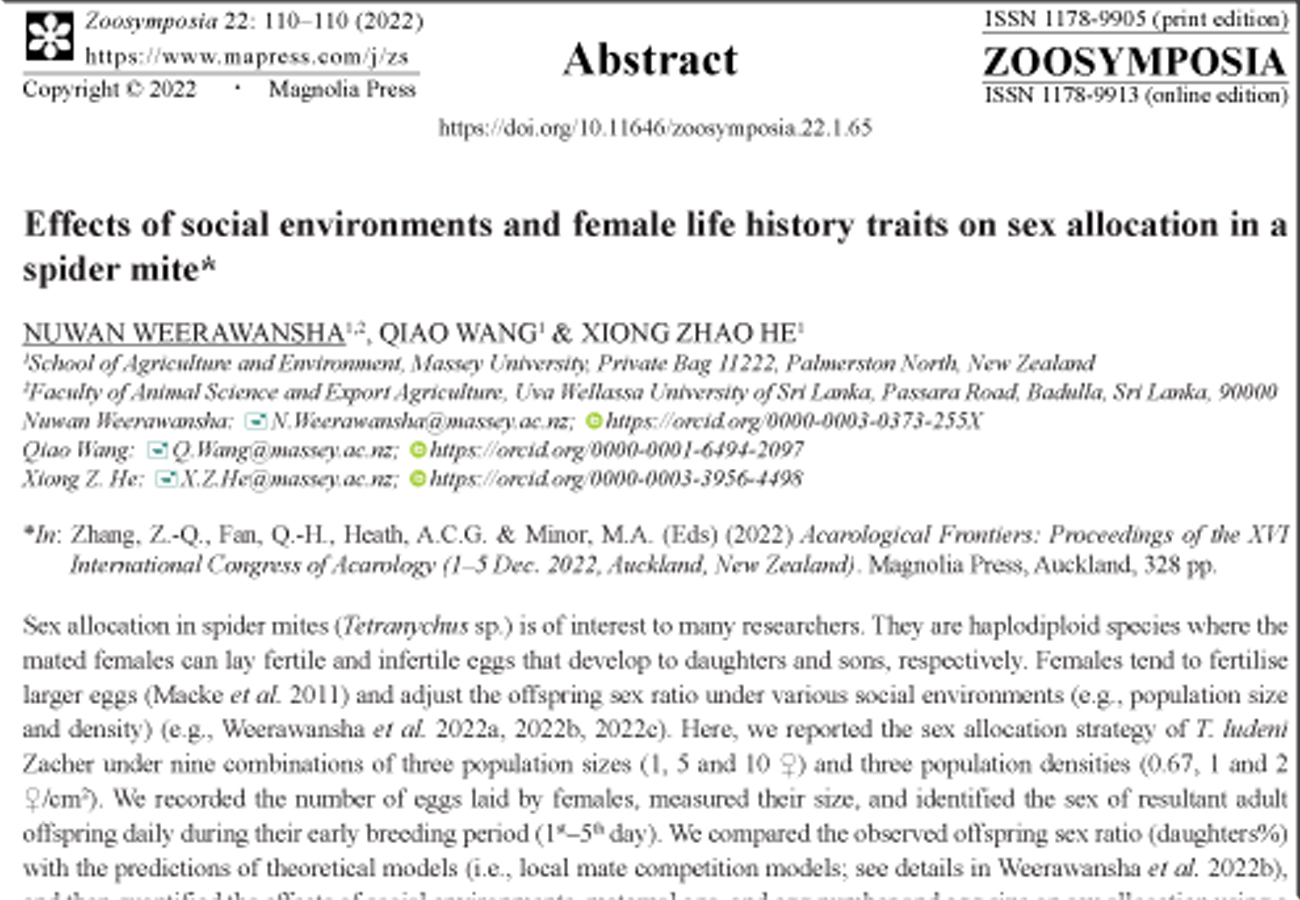Abstract
Sex allocation in spider mites (Tetranychus sp.) is of interest to many researchers. They are haplodiploid species where the mated females can lay fertile and infertile eggs that develop to daughters and sons, respectively. Females tend to fertilise larger eggs (Macke et al. 2011) and adjust the offspring sex ratio under various social environments (e.g., population size and density) (e.g., Weerawansha et al. 2022a, 2022b, 2022c).
References
Macke, E., Magalhães, S., Do-Thi Khan H., Luciano, A., Frantz, A., Facon, B. & Olivieri, I. (2011) Sex allocation in haplodiploids is mediated by egg size: Evidence in the spider mite Tetranychus urticae Koch. Proceedings of the Royal Society B: Biological Sciences, 278 (1708), 1054–1063. https://doi.org/10.1098/rspb.2010.1706
Weerawansha, N., Wang, Q. & He, X.Z. (2022a) Adjustment of fecundity and sex ratio in response to social environments in a haplodiploid mite. Systematic and Applied Acarology, 27 (1), 61–70. https://doi.org/10.11158/saa.27.1.7
Weerawansha, N., Wang, Q. & He, X.Z. (2022b) Local mate competition model alone cannot predict the offspring sex ratio in large and dense populations of a haplodiploid arthropod. Current Zoology, zoac022. https://doi.org/10.1093/cz/zoac022
Weerawansha, N., Wang, Q. & He, X.Z. (2022c) Comparing the effects of social environments and life history traits on sex allocation in a haplodiploid spider mite. Systematic and Applied Acarology, 27 (10), 2123–2130. https://doi.org/10.11158/saa.27.10.20


